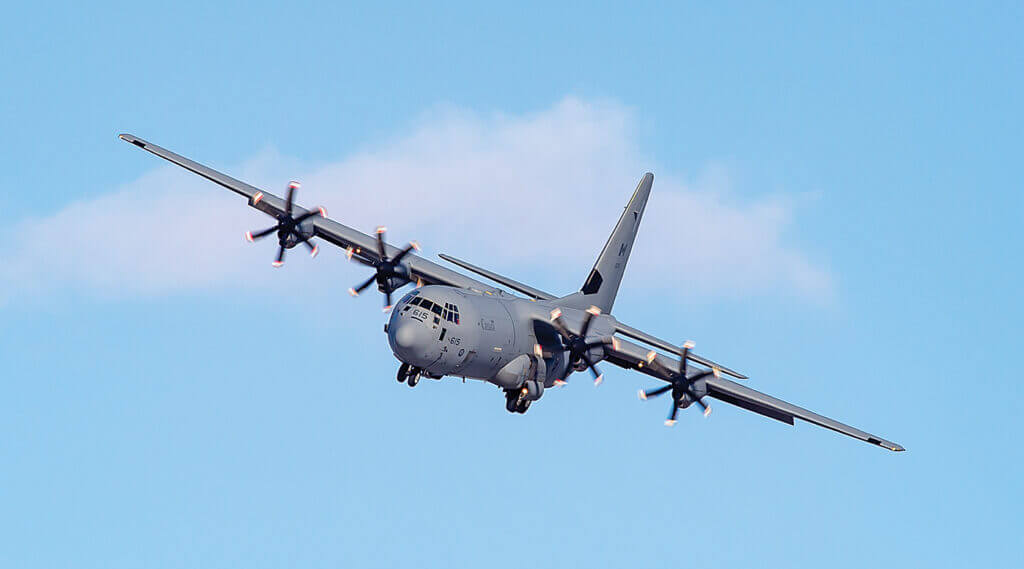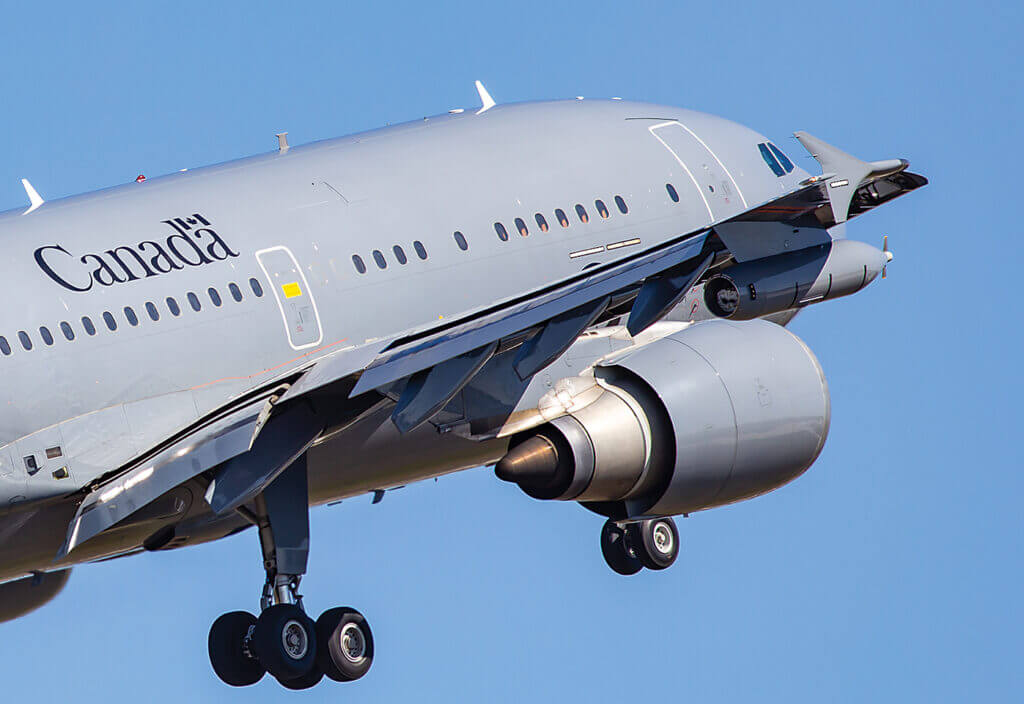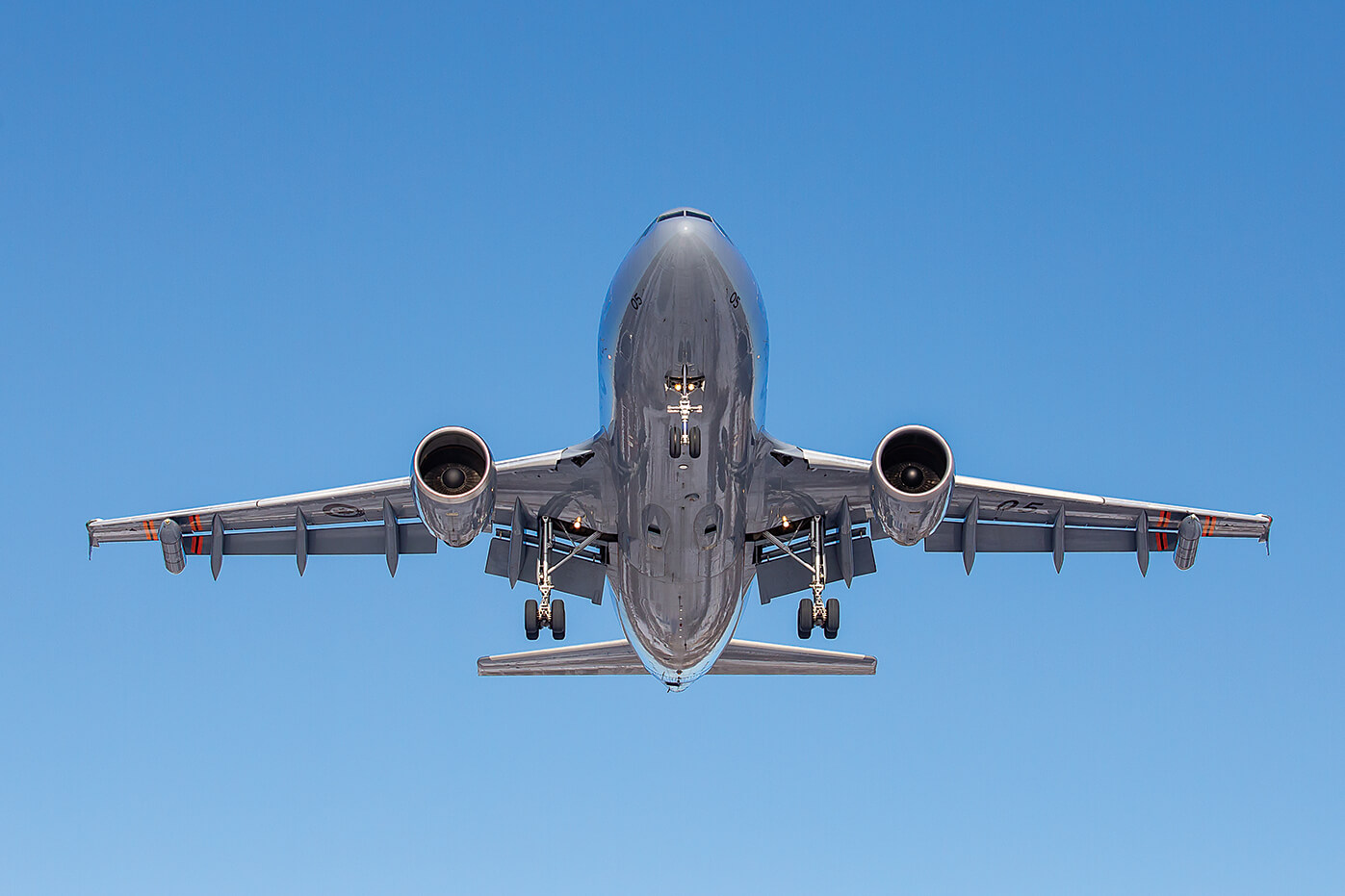Estimated reading time 12 minutes, 28 seconds.
The CC-130J Hercules had just landed at Andersen Air Force Base on the night of July 10, and the crew was preparing to shut down its engines, when the call reached the cockpit. Vessel in distress, no duff!
The Herc crew were part of an Air Task Force (ATF) deployed to the island of Guam for Exercise Mobility Guardian 2023, and had minutes earlier completed a transport mission under night vision googles (NVGs).

The 21-foot fishing vessel, with a captain and 10 passengers on board, had lost propulsion and was adrift about 30 nautical miles northwest of the island of Rota, in the Marianas Archipelago. A French Air Force A400 Atlas transport aircraft had located the ship and was circling overhead, but was running low on fuel, and large swells were preventing local boats from assisting.
With engines still warm, Captain Alex Upshaw-Dammer, the aircraft commander, quickly refueled and took off to relieve the French aircraft. By the time the Hercules arrived on station, the fishing vessel had lost battery power and was little more than a dark spec tossing among the rolling waves. But with NVGs, the CC-130J crew was able to maintain visual contact for about three hours until a U.S. Navy MH-60 Nighthawk helicopter, dispatched from Guam along with a U.S. Coast Guard cutter, reached the area and was able to hoist all 11 people to safety.
The incident might have been outside the exercise, but it was a “real world” illustration of the interoperability among trusted partners — French, Canadian and American crews and aircraft supporting each other to execute a mission, observed Lieutenant-Colonel Kyle Welsh, the ATF commander, and the commanding officer of 436 Transport Squadron at 8 Wing Trenton, Ontario.
Exercise Mobility Guardian (MG) is a biennial training event hosted by the U.S. Air Force’s (USAF) Air Mobility Command. First held in 2017, the exercise has been conducted in North America and constructed around scenarios designed to challenge air mobility and logistics, including transport and air drops, air-to-air refueling, and aeromedical evacuation.
For 2023, Air Mobility Command stepped out of its comfort zone and expanded Mobility Guardian to a larger multinational event for Five Eyes partners — Australia, New Zealand, Canada, the United Kingdom and the United States — as well as France and Japan, set in a scenario stretching across the Indo-Pacific.
Though it was billed as a means to “showcase the RCAF as a mission-ready and combat-capable force,” according to Royal Canadian Air Force commander Lieutenant-General Eric Kenny, it was an opportunity to strengthen allied interoperability in the region and work through operational concepts and command and control and communications challenges in a contested and degraded environment.
This is “about the fight to get into the fight,” Major-General John Klein, commander of the USAF Expeditionary Center, which supports Air Mobility Command, told an online forum hosted by the Air & Space Force Association in August. “There is no air mobility without air mobility support.”
Scaled back in 2021 due to the global pandemic, MG23 brought together more than 70 aircraft for two weeks in mid-July, testing their ability to operate from multiple locations in a theatre spanning over 4,800 kilometres.
While there was a broad scenario with injected incidents intended to test the training audience, much was left unscripted to challenge the participants.

MG23 integrated with overlapping allied service exercises in the region and quickly became an integral part of their air movements, responding to “requests for effects” such as refueling and transportation of personnel and equipment throughout the joint operating area.
“It definitely added an element of realism,” said Welsh, a Hercules pilot with experience flying the CC-177 and two tours early in his career flying CU-170 Heron remotely piloted aircraft in Afghanistan. “And it was a lot more satisfying moving real people and equipment than simulating an effect. [They] needed to get to where they were going because they had other objectives to get done.”
Self-sufficient as possible
Tactical airlift and air-to-air refueling have typically been critical support for CP-140 Aurora long-range patrol detachments and CF-18 fighter jets deploying and returning from missions and training events in the Indo-Pacific, such as Operation Neon monitoring and enforcing United Nations Security Council sanctions imposed against North Korea, or Sea Dragon, an anti-submarine warfare exercise near Guam. Rarely have the Hercules and tankers been invited to participate in their own dedicated exercise.
For MG23, the Air Task Force of 108 Canadian Armed Forces members included a tactical airlift detachment of two CC-130J Hercules and an air-to-air refueling detachment of one CC-150T Polaris tanker, as well as the respective aircrews, operations personnel, and maintenance teams from 436 Squadron and 437 Transport Squadron.
But it also brought a much broader range of capabilities, including an aeromedical evacuation team able to perform basic and critical care in the back of Canadian and allied aircraft, an Expeditionary Air Traffic Management team from 8 Air Communications and Control Squadron with the equipment to quickly standup remote airfields or establish controlled drop zones, and a Mobile Air Movements Section, the often overlooked personnel that pack and unload pallets, prepare container delivery systems for parachute drops, and handle the logistics of cargo movement. The team from 2 Air Movements Squadron included several embedded members from the Canadian Army Advanced Warfare Centre, specialists in container parachute drops.
Among Air Mobility Command’s objectives was the ongoing testing of an operational concept, introduced in August 2022, called Agile Combat Employment (ACE). A “reactive operational scheme of manoeuvre” intended to “increase survivability while generating combat power,” ACE aims to “complicate the enemy’s targeting process, create political and operational dilemmas for the enemy, and create flexibility for friendly forces.”
In part, it is further recognition that in a conflict against a peer adversary with persistent surveillance capabilities and long-range precision munitions, operating from large main operating bases (MOB), as the USAF typically does, is a vulnerability, Welsh observed.
RCAF air task forces generally operate with a small footprint, relying on local military resources or reach-back to Canada when abroad. But for MG23, Welsh tried to reduce that even further.
“That is a new concept in some respects. We will often go to a location and draw on the MOB that is there or civilian support that would be contracted. In this instance, we tried to be somewhat self-sufficient,” he explained. “Even though we were based in Guam, and there is a large U.S. military presence on the island, we tried to minimize our reliance on those resources.”

The RCAF aeromedical evacuation, air traffic and air drop enablers were representative of the ATF’s ability to “minimize our reliance on the base or even the island’s resources,” Welsh noted, and, in the case of the air movements team, were at times incorporated into a coalition air logistic team to support all aircraft fleets.
The significance of the air traffic management capability was particularly evident, he added. Replete with mobile tactical air navigation systems, radios, surveying equipment and airfield lighting, members were able to open airfields dating from the Second World War that had not been used in years.
“[They] will be key to the future of agile combat employment,” he said. “I know we got a lot of praise from our allies for being able to do that.”
In an example of interoperability and interchangeability on the fly, when a CC-130J became “unserviceable” after the engine fire detection system malfunctioned, rather than wait several days for parts to be sent from Canada, the maintenance team drew on the help of the Royal Australian Air Force to provide the parts, which were brought into theatre by an American C-17 Globemaster about to depart for Guam from Australia. And when the parts arrived, Canadian and Australian technicians completed the repair.
Typically, militaries have strict aircraft maintenance qualifications that allow only their trained technicians to work on an airframe. “On this exercise, we had Americans embedded with our maintenance detachment for a time, and vice versa, and we were working on each other’s aircraft,” said Welsh. “It was an amazing example of interoperability.”
“That is the collaborative piece, where we are working to minimize our footprint but also rely on our allies to find solutions,” he added. “We did quite a bit of that.”
Among the rare sightings during MG23 was a mass formation tactical airlift mission comprised of C-130Js, A400s and C-17s. Cooperatively, they moved a large force in a short timeframe, working with expeditionary air traffic management teams to rapidly open seldom used airfields and drop zones. Establishing a sizeable “presence” and then sustaining it served as yet another demonstration of “collectively being independent from the base as a whole,” Welsh noted.
In a fight where participants were constantly reminded of the “tyranny of distance,” air-to-air refueling was a critical component of the training. The CC-150T Polaris operated almost daily throughout the exercise, supporting primarily U.S. Navy and Marine Corps fighter jets participating in a related event.
“The distances between locations are pretty excessive and the number of alternate or diversion airfields is limited,” he emphasized, “so having a tanker is almost a necessity to move throughout the region.”
Mobility Guardian marked a first for the Polaris — refueling an F-35B, the short take-off and vertical landing variant operated by the Marine Corps.
Degraded comms
Facing a simulated adversary able to deny GPS access and degrade the communications environment, participants had to adopt a Primary, Alternate, Contingency, and Emergency (PACE) plan for maintaining situational awareness. If transferring information in a secure manner was compromised, aircrews switched to an alternate, and then a contingency method that involved the use of code words, and finally an emergency option with technical or operational restrictions.

“We made sure we had different, redundant communications plans and, if required, we could move down through the PACE plan and still be able to operate effectively,” Welsh explained.
With a logistical tail that stretched over 12,000 kilometres from Trenton to Guam and a 13-hour time difference between theatre and its main operating base, the Air Task Force accumulated plenty of lessons about managing supplies and operating more independently. Members also picked up a few ideas from partners, such as painting a part of a hangar floor with the exact markings to match the interior of a Herc, providing better mission rehearsal of pallet placements.
“Often, we get into a fixed mindset [about how a task is performed],” Welsh noted. “In this exercise, because we were able to work with trusted friends, they would show us how they did a similar procedure. We picked up a few tactics, techniques, and procedures that we’ll adopt in Canada.”
Allies were particularly interested in the airfield survey equipment employed by the air traffic management team, he added.
As much as Mobility Guardian was an opportunity to collaborate on operational and tactical challenges, it was also validation of strategic intent, Welsh noted. In line with the federal government’s Indo-Pacific strategy and the need to build partnerships and increase visibility in the region, “this was a demonstration of Canada’s resolve, that Canada does have a vested interest in being here, and we do take our obligation to peace and security in the region seriously,” he said.


Excellent photos in this article by Galen Burrow.